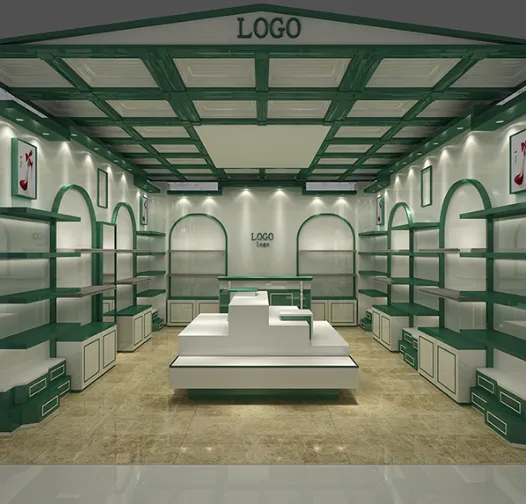- 150 metr günorta tarap, Günbatar DingWei ýoly, Nanlou obasy, Çanan şäheri, GaoÇeng sebiti, Şijiazhuang, Hebei, Hytaý
- monica@foundryasia.com
Jul . 21, 2025 13:53 Sanawa dolan
Smart Bag Displays That Sell: Choosing the Right Fixtures for Style, Function, and Flow
Whether you’re opening a boutique, managing a high-traffic department store, or upgrading your retail design, how you present your products matters—especially in the world of bags. A well-placed bags display unit does more than hold merchandise—it defines brand experience, drives customer engagement, and maximizes floor space.
Bags are not just accessories. For many consumers, they’re statement pieces. That means your bag shop display should do justice to form and function. The right bag store fixture not only highlights product features—size, shape, texture, brand—it also invites customers to interact, try, and ultimately buy.

Why Bag Displays Require Special Attention
Unlike folded apparel or boxed electronics, bags vary dramatically in shape, structure, and handling. A crossbody purse needs a different approach than a structured backpack or a premium leather tote. The best displays account for these differences while staying brand-consistent.
A great bags display unit should:
Maintain the bag’s shape without distortion
Allow easy customer access and inspection
Be adjustable for varying sizes and styles
Align with your store’s brand identity
Fit seamlessly within your traffic flow and floor plan
Common Types of Bag Shop Display Solutions
Here are the most effective display systems used in modern retail environments:
1. Wall-Mounted Hooks or Rails
Ideal for showcasing bags vertically, these maximize wall real estate and keep merchandise at eye level. Adjustable hooks allow for mixed styles (totes, clutches, crossbody).
2. Freestanding Bags Display Units
These multi-sided fixtures often include hanging arms, shelves, or cubbies—making them ideal for highlighting collections in the center of the store.
3. Tiered Table Displays
Great for premium collections or seasonal showcases. Use risers, bust forms, or acrylic props to elevate certain bags and create visual interest.
4. Glass or Acrylic Display Cases
Perfect for luxury or limited-edition handbags, these protect high-value items while maintaining visibility. Ideal for high-end boutiques.
5. Custom Bag Store Fixtures
Think branded shelving, themed display pods, or interactive units with integrated lighting, screens, or mirrors. These elevate the experience and reinforce brand identity.
What Makes a Great Bag Store Fixture?
Not all fixtures are created equal. A well-designed bag store fixture should be:
Stable: Bags are heavy. The fixture must hold weight without tipping or warping.
Adjustable: New styles arrive every season. Flexibility in height, spacing, and orientation is a must.
Visually clean: The focus should be on the product—not an overly complicated or bulky unit.
Durable: Retail is tough. Choose materials that can withstand constant touching, restocking, and cleaning.
On-brand: Fixtures should match the feel of your store—minimalist, rustic, luxurious, tech-forward, etc.
Materials Matter: What Your Fixtures Say About You
|
Material |
Best For |
Benefits |
|
Metal (Chrome/Matte Black) |
Contemporary shops & high traffic |
Durable, sleek, supports heavier bags |
|
Wood |
Boutique & lifestyle stores |
Warm, organic, and customizable |
|
Acrylic |
Pop-ups or minimalist displays |
Lightweight, modern, unobtrusive |
|
Glass |
Luxury bag sections |
Elegant, high-end appeal, secure |
|
Powder-coated steel |
Large-format retail |
Long-lasting, low maintenance |
Lighting also plays a role. Spotlights or under-shelf LEDs can bring out textures, patterns, and brand details that catch the shopper’s eye.
Strategic Tips for Bag Display Layout
Group by style or function: Totes together, backpacks together. This helps shoppers compare.
Use focal points: Position a hero bag at eye level or near the entrance.
Create discovery moments: Mix feature bags with accessories (e.g., scarves, wallets) to encourage upsells.
Keep it uncluttered: Too many bags in one space creates decision fatigue. Rotate inventory often.
Incorporate mirrors: Shoppers want to try on and visualize the bag in use.
Bag Displays for Different Store Types
• Luxury Boutiques
Go minimal with spotlighted pedestal fixtures, secure glass cases, and curated display tables.
• Department Stores
Use freestanding modular racks and tiered displays to maximize stock visibility and product diversity.
• Pop-Up Shops
Opt for lightweight, mobile bags display units—foldable rails, acrylic risers, and pegboard panels.
• Lifestyle & Eco Stores
Use wooden crates, reclaimed fixtures, and hanging ropes to reinforce sustainable messaging.
Bag Display FAQs
Q1: What’s the best bags display unit for small retail spaces?
A: Wall-mounted rails with adjustable hooks are ideal for tight floorplans. They keep items visible without taking up floor space.
Q2: How do I stop displayed bags from losing shape?
A: Use internal fillers (foam, paper, or custom forms) or display busts designed for handbags. They keep the silhouette intact and avoid sagging.
Q3: Can I mix bags with other accessories in one fixture?
A: Yes—but do it sparingly. Keep it clean and thematic (e.g., pairing a clutch with a matching wallet or scarf). Don’t overcrowd.
Q4: What height should a performance bag display shelf sit at?
A: Eye level (roughly 140–160 cm) is best for featured products. Lower tiers can hold stock or less premium bags.
Q5: Are custom bag store fixtures worth the investment?
A: For premium or high-volume brands, absolutely. Custom fixtures reinforce brand identity, improve in-store experience, and often boost conversion rates.
-
Square Cast Iron Cookware Picks
HabarlarJul.21,2025
-
Seasoned Cast Iron Grill For Everyday Cooking
HabarlarJul.21,2025
-
Preseason Cast Iron Made Easy
HabarlarJul.21,2025
-
Pre Seasoned Cast Iron for Daily Cooking
HabarlarJul.21,2025
-
Cast Iron Wok Cooking Power
HabarlarJul.21,2025
-
Cast Iron Grill Pan For Stovetop Use
HabarlarJul.21,2025